Results 10,621 to 10,630 of 12094
Thread: Anandtech News
-
06-17-20, 03:01 AM #10621
Anandtech: Qualcomm Announces Snapdragon 690: 5G & A77 In The Mid-Range
Today Qualcomm is extending its 5G SoC portfolio down to the Snapdragon 600-series, introducing the new Snapdragon 690 platform and chip. The new design is a more significant upgrade to the 600-series, not only upgrading the cellular capabilities, but also upgrading some of the cornerstone IPs to the newest generation available.
Although the new Snapdragon 690 maintains its CPU configurations in terms of big and little cores in a 2+6 setup, Qualcomm has managed to include the newest Cortex-A77 IP for the big CPU cores, resulting in a 20% performance uplift thanks to the microarchitectural improvements. The clock speeds remain the same as found in other recent 600-series designs, meaning 2GHz on the big cores and 1.7GHz for the A55 cores.Qualcomm Snapdragon 600-Range SoCs SoC Snapdragon 660 Snapdragon 662 Snapdragon 665 Snapdragon 670 Snapdragon 675 Snapdragon 690 CPU 4x Kryo 260 (CA73)
@ 2.2GHz
4x Kryo 260 (CA53)
@ 1.8GHz4x Kryo 260 (CA73)
@ 2.0GHz
4x Kryo 260 (CA53)
@ 1.8GHz4x Kryo 260 (CA73)
@ 2.0GHz
4x Kryo 260 (CA53)
@ 1.8GHz2x Kryo 360 (CA75)
@ 2.0GHz
6x Kryo 360 (CA55)
@ 1.7GHz2x Kryo 460 (CA76)
@ 2.0GHz
6x Kryo 460 (CA55)
@ 1.7GHz2x Kryo 560 (CA77)
@ 2.0GHz
6x Kryo 560 (CA55)
@ 1.7GHzGPU Adreno 512 Adreno610 Adreno 615 Adreno 612 Adreno 619L DSP Hexagon 680 Hexagon 683 Hexagon 686 Hexagon 686 Hexagon 685 Hexagon
692ISP/
CameraSpectra 160
24MPSpectra 340T
25MP single / 16MP dualSpectra 165
25MP single / 16MP dualSpectra 250
25MP single / 16MP dualSpectra 250
25MP single / 16MP dualSpectra 355L
48MP single / 32+16MP dualMemory 2x 16-bit @ 1866MHz
LPDDR4
14.9GB/s2x 16-bit @ 1866MHz
LPDDR4X
14.9GB/s
1MB system cacheIntegrated Modem Snapdragon X12 LTE Snapdragon X11 LTE
(Cat 12/13)
DL = 390Mbps
2x20MHz CA, 256-QAM
UL = 150Mbps
2x20MHz CA, 64-QAMSnapdragon X12 LTE
(Category 12/13)
DL = 600Mbps
3x20MHz CA, 256-QAM
UL = 150Mbps
2x20MHz CA, 64-QAMSnapdragon X51
( LTE )
DL = 1200 Mbps
UL = 210 Mbps
( 5G NR
Sub-6 )
DL = 2500 Mbps
UL = 1200 MbpsEncode/
Decode2160p30, 1080p120
H.264 & H.2651080p60
H.264 & H.2652160p30, 1080p120
H.264 & H.265Mfc. Process 14nm LPP 11nm LPP 11nm LPP 10nm LPP 11nm LPP 8nm LPP
On the GPU side, we see the shift to a new Adreno 619L design sees a much bigger shift with an up to 60% increase in performance compared to the previous generation Snapdragon 675.
Memory-wise, it’s still a LPDDR4X SoC with dual 16-bit channel support, which is plenty for the bandwidth requirements at this performance segment.
Qualcomm is also trickling down some of the newer higher end multimedia features to the 600-series, such as the newer generation Spectra iSP which is able to support up to 192MP still pictures or up to 48MP sensors with multi-frame noise reduction, or a dual-camera setup in tandem of 32+16MP sensors. The chip has a 10-bit capture and display pipeline, allowing it 4K HDR capture and display – although we didn’t see mention of 4K60 recording.
The key feature of the Snapdragon 690 is its shift towards a 5G modem platform. The integrated X51 modem now adds support for 5G sub-6GHz with global band support. The speeds here scale up to 2500Mbps downstream and 1200Mbps upstream on sub-6 networks, utilising up to 100MHz of spectrum bandwidth. The chip seemingly makes without mmWave connectivity, and this makes a lot of sense given the price range that the 600-series is meant to be used in, as well as the general lack of mmWave adoption in most markets.
“This new platform is designed to make 5G user experiences even more broadly available around the world. Snapdragon 690 also supports remarkable on-device AI and vibrant entertainment experiences. HMD Global, LG Electronics, Motorola, SHARP, TCL, and Wingtech are among the OEMs/ODMs expected to announce smartphones powered by Snapdragon 690.”
We’re expecting the new chip to be deployed in devices by various vendors in the second half of the year.
Related Reading:- Qualcomm Announces Snapdragon 768G: Higher-bin 765 up to 2.8GHz
- Qualcomm’s New 3rd Generation Snapdragon X60 5G Modem, Built on 5nm
- Qualcomm Announces Snapdragon 720G, 662 and 460 SoCs
- Qualcomm Announces Snapdragon 865 and 765(G): 5G For All in 2020, All The Details
More...
-
06-17-20, 12:43 PM #10622
Anandtech: The SilverStone Permafrost PF120, PF240, and PF360 ARGB AIO Coolers Review
SilverStone is a well-known name amongst advanced users and enthusiasts. The company earned its reputation from its first PSUs and original case designs, and soon diversified towards cooling related products. Their products usually are designed to be cost-effective, with a focus on practicality and quality instead of extravagant aesthetics. That tactic served SilverStone very well in the past, some of their CPU tower coolers have become very good values for the price.
Given SilverStone's success with air coolers, today we are switching tracks to liquid coolers and taking a look at SilverStone’s latest all-in-one (AIO) “Permafrost” cooler series. With multiple models covering the most popular cooler sizes, SilverStone is looking to tap into what has continued to be a popular market for alternative high-performance coolers. And with the inclusion of Addressable RGB (ARGB) lighting, SilverStone is perhaps bowing to a bit to market pressures as well by including RGB lighting in their new AIO coolers.
More...
-
06-17-20, 12:43 PM #10623
Anandtech: Lenovo’s New ThinkPad P1 Gen3 for Professionals: OLED, 8-core Xeon, Quadro
At the high-end of Lenovo’s ThinkPad designs, where professionals need server-grade features like ECC and graphics focused on compute or rendering, we get the P1 model which is updated for 2020 as the P1 Gen3. This notebook refresh is a 15.6-inch design, offering an OLED display, choice of Intel 10th Gen or Xeon processors, and Quadro-level graphics. The underlying design of the chassis is carbon fiber, aiming to be sturdy yet lightweight, with a fingerprint resistant finish to enhance the aesthetic of a premium system.
The ThinkPad P1 Gen3 is a 15.6-inch design with options that include a 3840x2160 OLED touch display at HDR500, a 3840x2160 LCD IPS variant up to 600 nits, or a 1920x1080 IPS 500nit HDR lower-cost option. Under the hood it supports Intel’s 10th Gen Core mobile 45 W processors, or their Xeon equivalents, which extends support to up to 64 GB of ECC for the Xeons via two SoDIMM slots. Graphics are available up to an NVIDIA Quadro T2000. There are two M.2 drives in the system, allowing for up to 4 TB of NVMe SSDs in RAID 0/1, and the system comes with an 80 Wh battery. Two power supplies are available – a base 135 W slim model or a 170 W slim model. Operating system options include Windows 10 Home, Pro, Pro for Workstations, Ubuntu, Red Hat (certified), or Fedora.
For professional users, the P1 Gen3 supports TPM, has a touch fingerprint reader for easy log-in, and a shutter mechanism for the 720p webcam. There is also an optional separate Hybrid IR camera. On the connectivity side, Intel’s AX201 Wi-Fi 6 solution is included as standard, but a CAT16 LTE smartphone modem is an optional extra, which comes in the M.2 form factor. The system is certified for a number of software vendors, such as AutoCAD, CATRIA, NX, SolidWorks, Revit, Creo, Inventor, etc.
From the design, the unit comes with the usual ThinkPad bells and whistles. The keyboard includes the TrackPoint in the middle of the keyboard, and the track pad at the bottom has physical keys above it. The keyboard is backlit and spill resistant. Ports on the side include two USB 3.2 Gen 1 Type-A ports, two USB-C Thunderbolt 3 ports, a HDMI 2.0 video output, a 3.5mm jack, and an SD Card Reader.
The P1 Gen3 comes with Lenovo’s ThinkShield software, and will also be the recipient of Lenovo’s new Ultra Performance Mode that allows the user to adjust the performance settings in order to achieve a desired performance or thermal characteristics of the system. Lenovo believes this is mostly relevant to users who need full turbo to get a project completed on time, or for those who use the system with VR and require a minimum standard of performance without any potential thermal disruptions.
The P1 Gen3 starting weight is 3.75 lbs (1.7 kg), which will add on with the addition of a graphics card / more memory / more storage etc. The Lenovo ThinkPad P1 Gen3 will be available from July, starting at $2019.
Gallery: Lenovo’s New ThinkPad P1 Gen3 for Professionals: OLED, 8-core Xeon, Quadro_carousel_thumb.jpg)
_carousel_thumb.jpg)
_carousel_thumb.jpg)
_thumb.jpg)
More...
-
06-18-20, 10:27 AM #10624
Anandtech: Mobile Flagship Phone Camera Overview 2020 H1: Still Picture Battle
When today you’re picking a flagship smartphone, you generally get more or less the same fundamental formula no matter the vendor you chose. It’s a glass slab with a screen, and more often than not even the internal hardware powering the phones isn’t all that different, with just a few exceptions. Whilst most vendors try to differentiate themselves in their designs and ergonomics, some with more success than others, the one area where smartphones can seemingly still be very different from each other is the camera department.
This year we’ve seen smartphones with more variety than ever in terms of their camera setups. The last few years has seen an explosion of fast-paced innovation in the image capture abilities of smartphones, with vendors focusing on this last aspect of a phone where they can truly differentiate themselves from others, and try to one-up the competition.
We’re halfway through 2020, and almost all vendors have released their primary flagship devices – many of which we still had yet to cover in full reviews. This was a perfect opportunity to put all of the new generation devices against each other and compare their cameras systems to really showcase just how different (or similar) they are to each other. Today’s article is a battle-royale for smartphone photography, providing an apples-to-apples comparison across the most important devices available today.
More...
-
06-18-20, 10:27 AM #10625
Anandtech: Intel Announces D7-P5500 and D7-P5600 Series PCIe 4.0 Enterprise SSDs
Intel has yet to launch their first CPUs supporting PCIe 4.0, but other parts of the business are keeping pace with the transition: network controllers, FPGAs, and starting today, SSDs. The first PCIe 4.0 SSDs from Intel are based on their 96-layer 3D TLC NAND flash memory, slotting into Intel's product line just below Optane products and serving as Intel's top tier of flash-based SSDs. The new Intel D7-P5500 and D7-P5600 are codenamed Arbordale Plus, a codename Intel revealed last fall without providing any other information except that the original Arbordale product was never released.
The two new SSD product lines are the first to fall into the D7 tier under the new naming scheme adopted by Intel in 2018. The P5500 and P5600 are closely-related products that differ primarily in their overprovisioning ratios and consequently their usable capacities, write speed and write endurance. The P5500 is the 1 drive write per day (DWPD) lineup with capacities ranging from 1.92 TB up to 7.68 TB, while the P5600 is the 3 DWPD tier with capacities from 1.6 TB to 6.4 TB. These serve as the successors to the P4510 and P4610 Cliffdale Refresh drives, and as such we expect some follow-on models to introduce the EDSFF form factor options and QLC-based drives that are still due for an update.
The switch to PCIe 4.0 enables a big jump in maximum throughputs supported: from 3.2 GB/s up to 7 GB/s for sequential reads, while sequential writes show a more modest increase from 3.2 GB/s to 4.3 GB/s. Random reads now hit 1M IOPS compared to about 651k IOPS from the previous generation, and random writes are still bottlenecked by the flash itself with a peak of 260k IOPS from the new P5600.Intel PCIe 4.0 Enterprise SSDs D7-P5500 D7-P5600 Form Factor U.2 2.5" 15mm Interface PCIe 4.0 NVMe 1.3c Capacities 1.92TB,
3.84TB,
7.68TB1.6TB,
3.2TB,
6.4TBNAND Intel 96L 3D TLC Sequential Read 7000 MB/s Sequential Write 4300 MB/s Random Read (4 kB) 1M IOPS Random Write (4 kB) 130k IOPS 260k IOPS Power Idle 20 W Operating 5 W Write Endurance 1 DWPD 3 DWPD Warranty 5 years
Intel hasn't shared information about the internal architecture of the new SSDs, so we don't know if they're still using a 12-channel controller design like their previous generation. Intel does tout improved QoS and a handful of new features, including a re-working of their TRIM implementation to reduce its interference with the performance of more important IO commands.
Related Reading- Microchip’s New PCIe 4.0 PCIe Switches: 100 lanes, 174 GBps
- Kioxia Releases First PCIe 4.0 SSDs: CD6 & CM6
- Intel Shares New Optane And 3D NAND Roadmap - Barlow Pass DIMMs & 144L QLC NAND in 2020
More...
-
06-22-20, 09:02 AM #10626
Anandtech: The Apple WWDC 2020 Keynote Live Blog (Starts at 10am PT/17:00 UTC)
While COVID may have put a crimp on the tech industry, for Apple the show must still go on. Join us at 10am Pacific/17:00 UTC for our live blog coverage of this year's Apple WorldWide Developer's Conference (WWDC), which like so many other shows is taking a uniquely virtual tack this year.
The morning keynote for the developer-focused show is typically a rapid-fire two-hour run through Apple's ecosystem, covering everything from macOS and iOS to individual Apple applications and more, and it sounds like Apple will be sticking to that strategy for their virtual show. Meanwhile there's always the lingering question over whether we'll also see a new hardware announcement this year – Apple tends to be about 50/50 with hardware at WWDC – something which has taken on an even greater significance this year as Apple is widely believed to be working on transitioning the Mac platform to its own Arm-based SoCs. Even if we don't get hardware details at this year's WWDC, even confirmation of that project and Apple's transition plans would mark the kick-off point for a huge shift in the Apple ecosystem, and an event that could reverberate into the PC ecosystem as well.
So join us at 10am Pacific to see just what Apple is working on for this year and beyond.
More...
-
06-22-20, 09:02 AM #10627
Anandtech: Intel to use Nanowire/Nanoribbon Transistors in Volume ‘in Five Years’
This year, at the international VLSI conference, Intel’s CTO Mike Mayberry gave one of the plenary presentations, which this year was titled ‘The Future of Compute’. Within the presentation, a number of new manufacturing technologies were discussed, including going beyond FinFET to Gate-All-Around structures, or even to 2D Nano-sheet structures, before eventually potentially leaving CMOS altogether. In the Q&A at the end of the presentation, Dr. Mayberry stated that he expects nanowire transistors to be in high volume production within five years, putting a very distinctive mark in the sand for Intel and others to reach.
More...
-
06-22-20, 05:13 PM #10628
Anandtech: Apple Announces iOS 14 and iPadOS 14: An Overview
Amongst today’s Apple’s WWDC historic announcements, such as the company’s switch from x86 to Arm processor architectures, we also saw the launch of the new iOS 14 and iPadOS 14 which bring new features to the company’s mobile devices.
More...
-
06-22-20, 05:13 PM #10629
Anandtech: New #1 Supercomputer: Fujitsu’s Fugaku and A64FX take Arm to the Top with
High performance computing is now at a point in its existence where to be the number one, you need very powerful, very efficient hardware, lots of it, and lots of capability to deploy it. Deploying a single rack of servers to total a couple of thousand cores isn’t going to cut it. The former #1 supercomputer, Summit, is built from 22-core IBM Power9 CPUs paired with NVIDIA GV100 accelerators, totaling 2.4 million cores and consuming 10 MegaWatts of power. The new Fugaku supercomputer, built at Riken in partnership with Fujitsu, takes the top spot on the June 2020 #1 list, with 7.3 million cores and consuming 28 MegaWatts of power.
More...
-
06-23-20, 12:39 AM #10630
Anandtech: The Next Phase: Apple Lays Out Plans To Transition Macs from x86 to Apple
After many months of rumors and speculation, Apple confirmed this morning during their annual WWDC keynote that the company intends to transition away from using x86 processors at the heart of their Mac family of computers. Replacing the venerable ISA – and the exclusively-Intel chips that Apple has been using – will be Apple’s own Arm-based custom silicon, with the company taking their extensive experience in producing SoCs for iOS devices, and applying that to making SoCs for Macs. With the first consumer devices slated to ship by the end of this year, Apple expects to complete the transition in about two years.
The last (and certainly most anticipated) segment of the keynote, Apple’s announcement that they are moving to using their own SoCs for future Macs was very much a traditional Apple announcement. Which is to say that it offered just enough information to whet developers (and consumers’) appetites without offering too much in the way of details too early. So while Apple has answered some very important questions immediately, there’s also a whole lot more we don’t know at the moment, and likely won’t known until late this year when hardware finally starts shipping.
What we do know, for the moment, is that this is the ultimate power play for Apple, with the company intending to leverage the full benefits of vertical integration. This kind of top-to-bottom control over hardware and software has been a major factor in the success of the company’s iOS devices, both with regards to hard metrics like performance and soft metrics like the user experience. So given what it’s enabled Apple to do for iPhones, iPads, etc, it’s not at all surprising to see that they want to do the same thing for the Mac. Even though the OS itself isn’t changing (much), the ramifications of Apple building the underlying hardware down to the SoC means that they can have the OS make full use of any special features that Apple bakes into their A-series SoCs. Idle power, ISPs, video encode/decode blocks, and neural networking inference are all subjects that are potentially on the table here.
More...
Thread Information
Users Browsing this Thread
There are currently 14 users browsing this thread. (0 members and 14 guests)




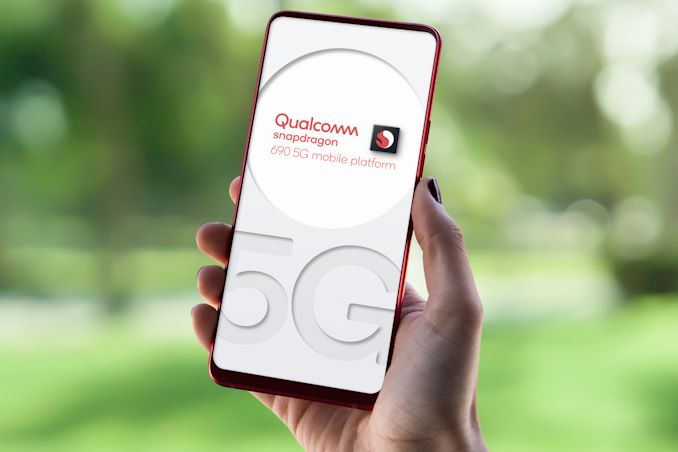
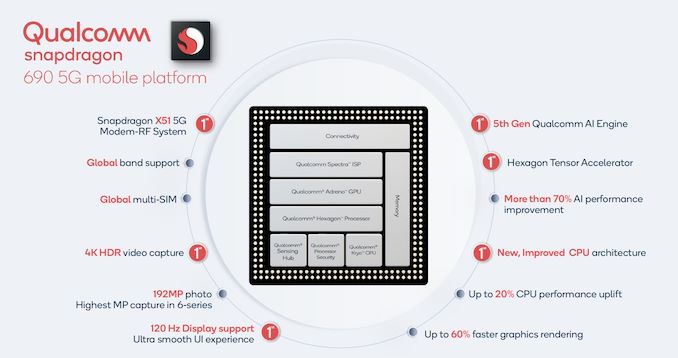

 Quote
Quote_575px.jpg)
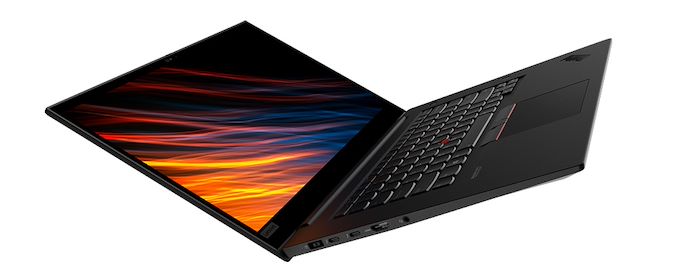
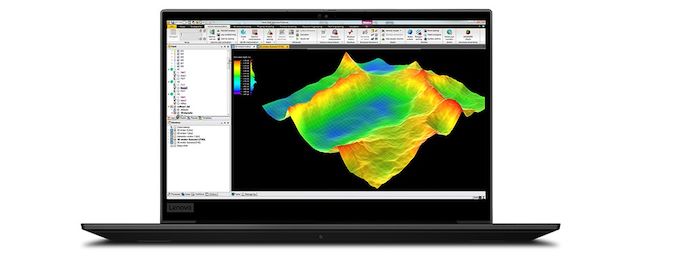


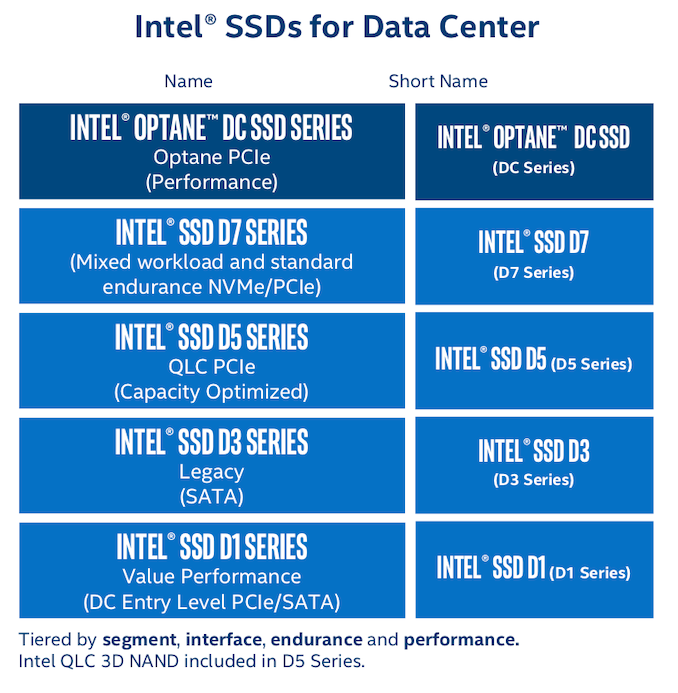


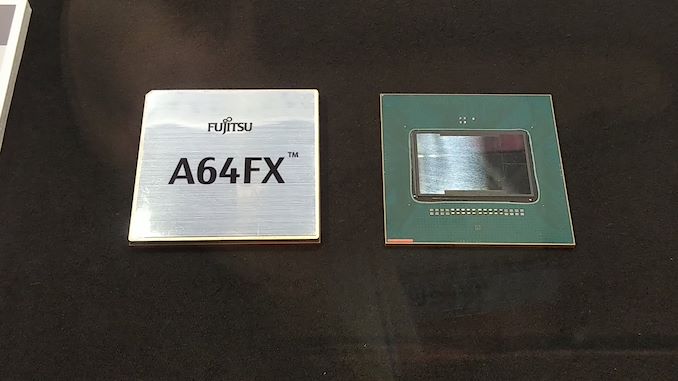
















Bookmarks